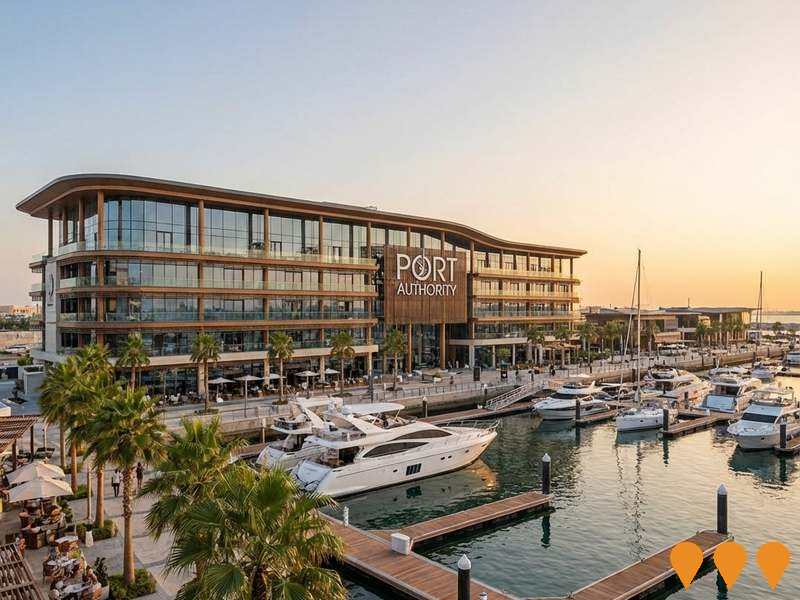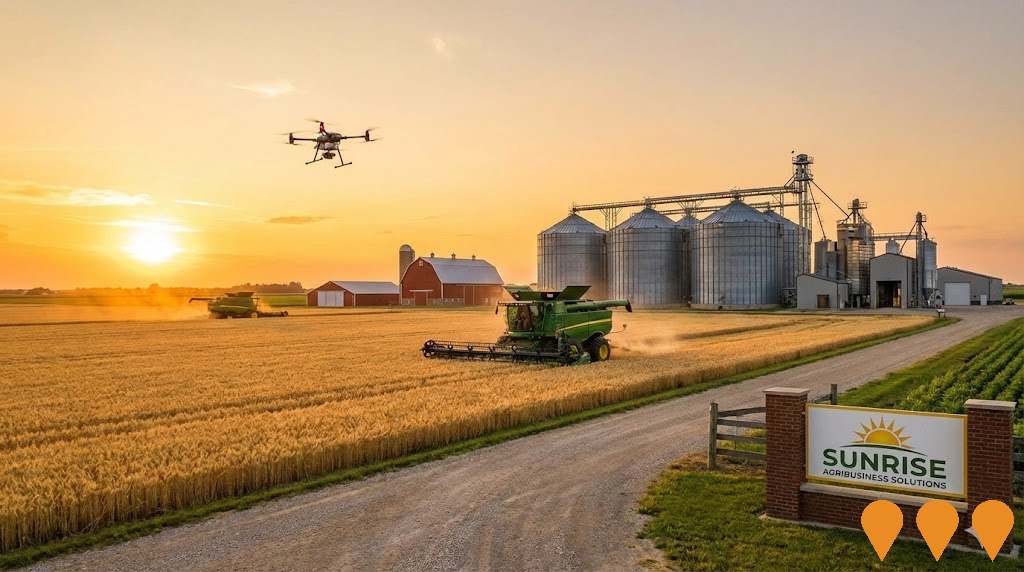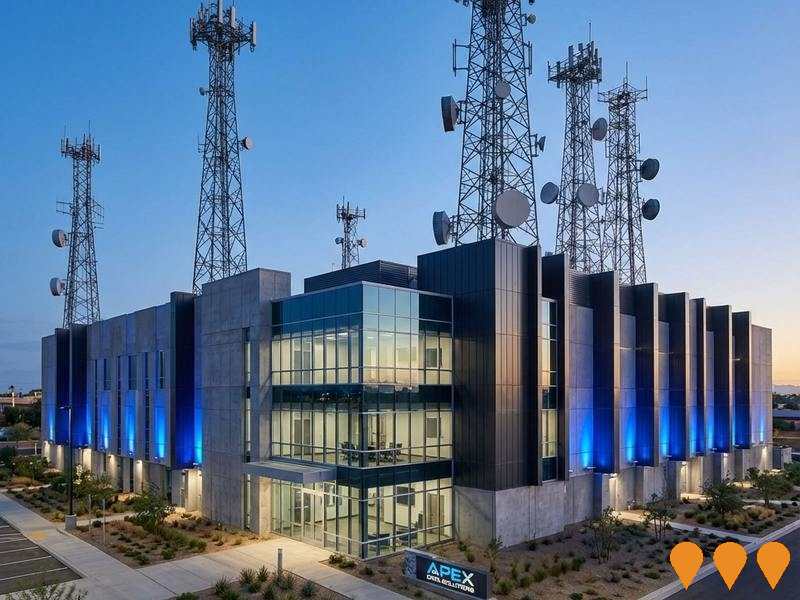Chart Color Schemes
est. as @ -- *
ABS ERP | -- people | --
2021 Census | -- people
Sales Activity
Curious about local property values? Filter the chart to assess the volume and appreciation (including resales) trends and regional comparisons, or scroll to the map below view this information at an individual property level.
Find a Recent Sale
Sales Detail
Population
Acton - Upper Burnie is positioned among the lower quartile of areas assessed nationally for population growth based on AreaSearch's assessment of recent, and medium term trends
Acton - Upper Burnie's population, as of Aug 2025, is approximately 3,409. This figure represents an increase of 139 people since the 2021 Census, which reported a population of 3,270. The growth is inferred from the estimated resident population of 3,395 in June 2024 and an additional 26 validated new addresses since the Census date. This results in a population density ratio of 1,585 persons per square kilometer, higher than the average across national locations assessed by AreaSearch. Acton - Upper Burnie's growth rate of 4.3% since the 2021 census exceeds that of the SA3 area at 3.7%, indicating it as a regionally significant growth leader. Natural growth contributed approximately 61.9% to overall population gains in recent periods.
AreaSearch uses ABS/Geoscience Australia projections for each SA2 area, released in 2024 with a base year of 2022. For areas not covered by this data and post-2032 growth estimates by age group, Tasmania State Government's Regional/LGA projections are adopted, released in 2022 using a 2021 base year and adjusted employing weighted aggregation methods from LGA to SA2 levels. Future demographic trends indicate an overall population decline of 18 persons by 2041. However, specific age cohorts are expected to grow; notably, the 85 and over age group is projected to increase by 44 people.
Frequently Asked Questions - Population
Development
Residential development activity is lower than average in Acton - Upper Burnie according to AreaSearch's national comparison of local real estate markets
Acton - Upper Burnie has seen minimal construction activity with 2 new dwellings approved annually on average over the past five years (totalling 12). This low level of development is characteristic of rural areas, where housing needs are modest and construction activity is limited by local demand and infrastructure capacity. It should be noted that with such low approval numbers, yearly growth figures can vary considerably based on individual projects.
Compared to Rest of Tas., Acton - Upper Burnie has much lower development activity, which is also below national patterns. All new constructions in the area have been detached houses, aligning with rural living preferences for space and privacy. The location has approximately 850 people per dwelling approval, indicating an established market. Given population projections showing stability or decline, Acton - Upper Burnie is expected to see reduced housing demand pressures, benefiting potential buyers.
With population projections showing stability or decline, Acton - Upper Burnie should see reduced housing demand pressures, benefiting potential buyers.
Frequently Asked Questions - Development
Infrastructure
Acton - Upper Burnie has limited levels of nearby infrastructure activity, ranking in the 19thth percentile nationally
Changes to local infrastructure significantly influence an area's performance. AreaSearch has identified 0 projects that may impact this area. Notable projects include Homes Tasmania - Park Grove Subdivision, Burnie City Centre Urban Plan, Burnie Cultural Precinct Redevelopment, and Marinus Link. The following list details those likely most relevant.
Professional plan users can use the search below to filter and access additional projects.
INFRASTRUCTURE SEARCH
 Denotes AI-based impression for illustrative purposes only, not to be taken as definitive under any circumstances. Please follow links and conduct other investigations from the project's source for actual imagery. Developers and project owners wishing us to use original imagery please Contact Us and we will do so.
Denotes AI-based impression for illustrative purposes only, not to be taken as definitive under any circumstances. Please follow links and conduct other investigations from the project's source for actual imagery. Developers and project owners wishing us to use original imagery please Contact Us and we will do so.
Frequently Asked Questions - Infrastructure
Marinus Link
Marinus Link is a 1,500 MW (2 x 750 MW) high-voltage direct current (HVDC) electricity and telecommunications interconnector between north-west Tasmania and the Latrobe Valley in Victoria. Stage 1 (750 MW) comprises approximately 255 km of subsea HVDC cable across Bass Strait and 90 km of underground HVDC cable in Gippsland, with converter stations at Heybridge (TAS) and Hazelwood (VIC). Early works and major procurement contracts are in place, with main construction now underway for a target energisation in 2030.

Marinus Link Stage 1
Marinus Link Stage 1 is a proposed 750 MW high-voltage direct current (HVDC) electricity interconnector between North West Tasmania and Victoria. It comprises approximately 255 km of undersea HVDC cable across Bass Strait and 90 km of underground HVDC cable in Gippsland, Victoria. The project received Australian Government approval in September 2025 and is targeting Final Investment Decision in late 2025, with construction expected to commence in 2026-2027 and commissioning by 2030.

Enabling Infrastructure for Hydrogen Production
Australia has completed the National Hydrogen Infrastructure Assessment (NHIA) to 2050 and refreshed its National Hydrogen Strategy (2024). The programmatic focus has shifted to planning and enabling infrastructure through measures such as ARENA's Hydrogen Headstart and the Hydrogen Production Tax Incentive (from April 2025). Round 2 of Hydrogen Headstart consultation occurred in 2025. Collectively these actions aim to coordinate investment in transport, storage, water and electricity inputs linked to Renewable Energy Zones and priority hubs, supporting large-scale renewable hydrogen production and future export supply chains.
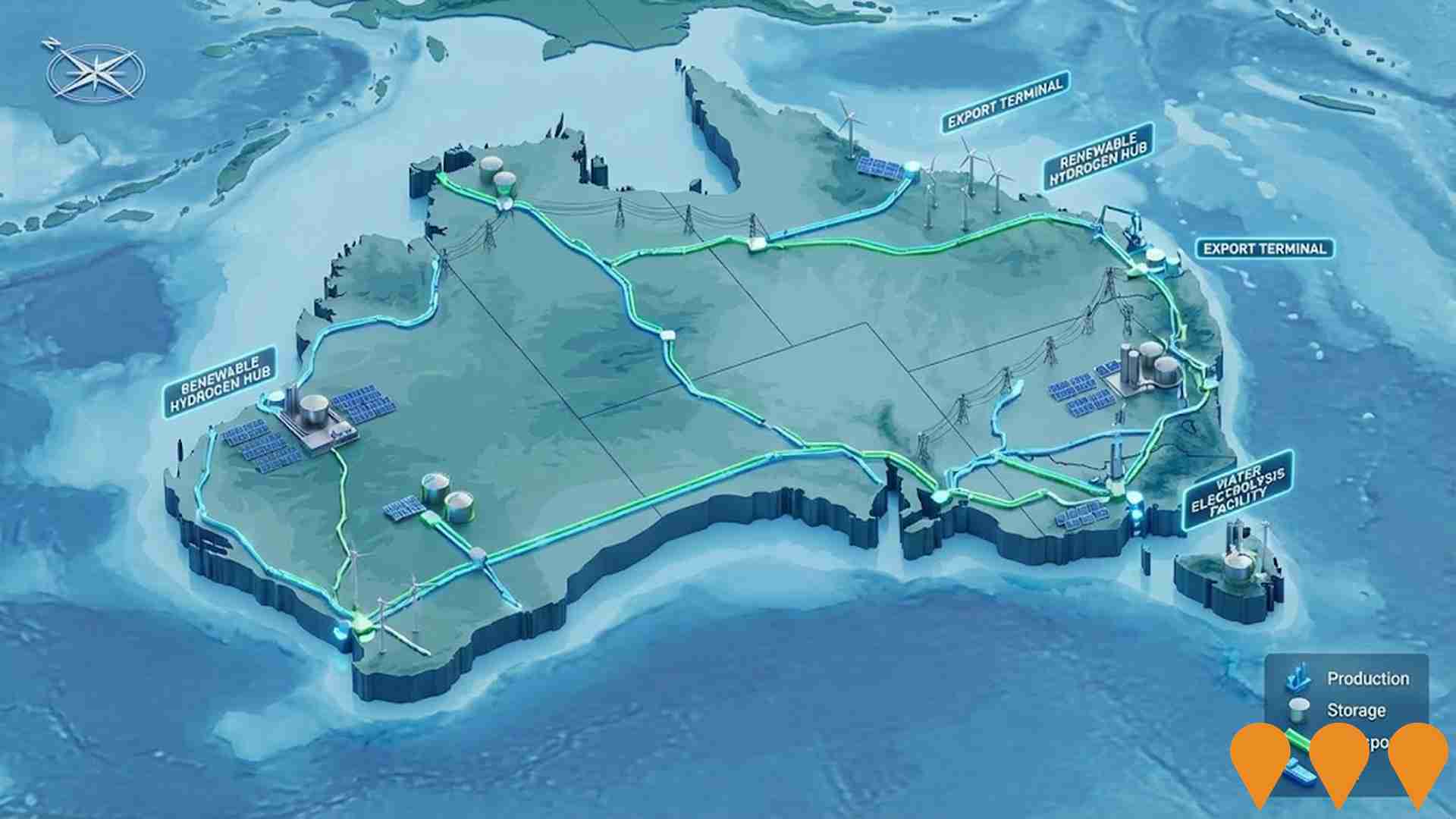
North West Transmission Developments
240km of new and upgraded transmission lines and energy infrastructure to increase Tasmania's electricity network capacity. Supporting infrastructure for Marinus Link. The North West Transmission Developments (NWTD) are intended to support Tasmania's renewable energy future. Main construction anticipated to commence in 2026 following final investment decision.

Bulk Water Supply Security
Nationwide program led by the National Water Grid Authority to improve bulk water security and reliability for non-potable and productive uses. Activities include strategic planning, science and business cases, and funding of state and territory projects such as storages, pipelines, dam upgrades, recycled water and efficiency upgrades to build drought resilience and support regional communities, industry and the environment.

Homes Tasmania - Park Grove Subdivision
A new subdivision in Park Grove to deliver 55 lots of land for new social and affordable housing. Around 85 per cent of the lots will be sold privately, with the remaining lots developed for social and affordable rental housing.

Burnie City Centre Urban Plan
An urban plan to revitalize the city center of Burnie by integrating the city's cultural heritage and modern needs. The plan aims to reinforce Burnie's identity, improve city amenities, promote inclusivity, and enhance pedestrian movement over the next 15-20 years.

Burnie Cultural Precinct Redevelopment
Redevelopment of the Burnie Arts and Function Centre to integrate it with the Museum and Art Gallery and civic plaza, creating a new cultural space. The project aims to attract 100,000 visitors per year and boost the local economy.
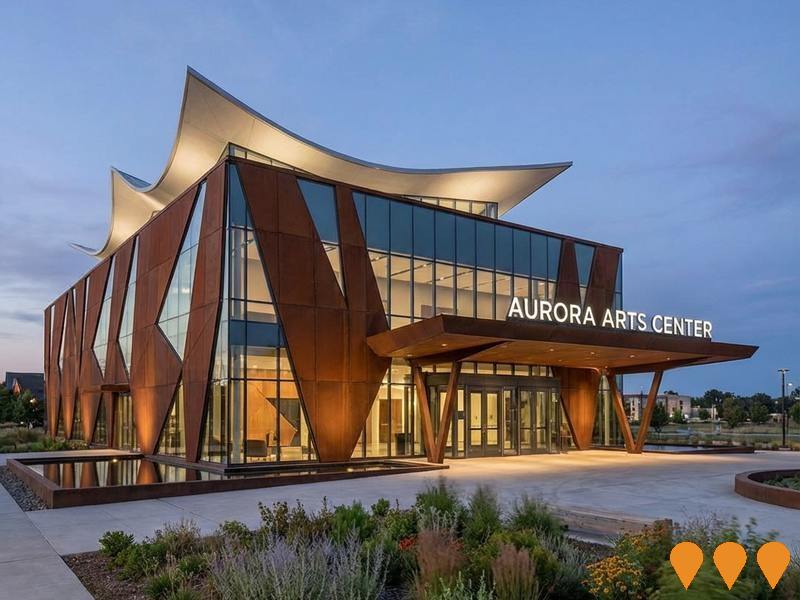
Employment
Employment drivers in Acton - Upper Burnie are experiencing difficulties, placing it among the bottom 20% of areas assessed across Australia
Acton - Upper Burnie has a balanced workforce with both white and blue collar jobs. The unemployment rate was 7.3% as of June 2025.
This is higher than the Rest of Tas.'s rate of 3.9%, indicating room for improvement. Employment growth over the past year was estimated at 3.6%. There are 1,438 residents currently employed. Workforce participation in Acton - Upper Burnie is lower than the regional average, at 51.5% compared to Rest of Tas.'s 55.7%.
The dominant employment sectors among residents include health care & social assistance, retail trade, and accommodation & food. Retail trade has a particularly notable concentration, with employment levels at 1.5 times the regional average. However, agriculture, forestry & fishing has limited presence in Acton - Upper Burnie, with only 3.0% of residents employed in this sector compared to the regional average of 8.4%. Employment opportunities locally may be limited, as indicated by the count of Census working population versus resident population. Over a 12-month period ending June 2025, employment increased by 3.6%, while labour force increased by 2.1%, leading to a decrease in unemployment rate by 1.3 percentage points. Jobs and Skills Australia's national employment forecasts from May 2025 suggest that national employment is expected to expand by 6.6% over five years and 13.7% over ten years. Applying these projections to Acton - Upper Burnie's employment mix suggests local growth of approximately 6.2%% over five years and 13.4% over ten years, based on a simple weighting extrapolation for illustrative purposes.
Frequently Asked Questions - Employment
Income
Income metrics place the area in the bottom 10% of locations nationally according to AreaSearch analysis
Acton - Upper Burnie's median taxpayer income in financial year 2022 was $44,928. The average income for the same period was $54,593. This is below the national average. Rest of Tas., on the other hand, had a median income of $47,358 and an average income of $57,384 in 2022. Based on Wage Price Index growth since financial year 2022, current estimates for Acton - Upper Burnie would be approximately $51,142 (median) and $62,143 (average) as of September 2025. According to the 2021 Census, household, family, and personal incomes in Acton - Upper Burnie all fall between the 3rd and 11th percentiles nationally. The predominant income cohort spans 32.9% of locals (1,121 people) with incomes between $400 and $799, differing from regional patterns where the $1,500 to $2,999 category dominates at 28.5%. Economic circumstances indicate widespread financial pressure, with 41.7% of households operating on weekly budgets below $800. Housing affordability pressures are severe, with only 83.1% of income remaining, ranking at the 4th percentile nationally.
Frequently Asked Questions - Income
Housing
Acton - Upper Burnie is characterized by a predominantly suburban housing profile, with a higher proportion of rental properties than the broader region
In Acton - Upper Burnie, as per the latest Census evaluation, 85.1% of dwellings were houses, with the remaining 14.9% comprising semi-detached homes, apartments, and other types. This contrasts with Non-Metro Tas., where 90.3% of dwellings were houses and 9.7% were other dwellings. Home ownership in Acton - Upper Burnie stood at 30.0%, with mortgaged dwellings at 29.5% and rented ones at 40.5%. The median monthly mortgage repayment was $989, lower than Non-Metro Tas.'s average of $1,200. The median weekly rent in Acton - Upper Burnie was $238, compared to Non-Metro Tas.'s $240. Nationally, mortgage repayments averaged $1,863 and rents were $375 per week.
Frequently Asked Questions - Housing
Household Composition
Acton - Upper Burnie features high concentrations of lone person households, with a lower-than-average median household size
Family households account for 57.7% of all households, including 19.8% couples with children, 22.8% couples without children, and 13.8% single parent families. Non-family households constitute the remaining 42.3%, with lone person households making up 40.3% and group households comprising 2.3%. The median household size is 2.1 people, which is smaller than the Rest of Tas. average of 2.3.
Frequently Asked Questions - Households
Local Schools & Education
Acton - Upper Burnie faces educational challenges, with performance metrics placing it in the bottom quartile of areas assessed nationally
The area's university qualification rate is 10.9%, significantly lower than the Australian average of 30.4%. This presents both a challenge and an opportunity for targeted educational initiatives. Bachelor degrees are most common at 7.9%, followed by postgraduate qualifications (1.5%) and graduate diplomas (1.5%). Vocational credentials are prominent, with 37.4% of residents aged 15+ holding such qualifications - advanced diplomas at 6.3% and certificates at 31.1%.
Educational participation is high, with 26.4% of residents currently enrolled in formal education. This includes 11.9% in primary, 7.3% in secondary, and 2.0% in tertiary education. North West Support School and North West Support School - Miandetta Campus serve a total of 130 students. Both schools offer integrated K-12 education for academic continuity. The area has limited local school capacity (3.8 places per 100 residents vs regional average of 16.3), leading many families to travel for schooling.
Frequently Asked Questions - Education
Schools Detail
Nearby Services & Amenities
Transport
Transport servicing is high compared to other areas nationally based on assessment of service frequency, route connectivity and accessibility
Acton-Urban Burnie has 20 active public transport stops. These are served by a mix of bus routes totalling 45. The weekly passenger trips across these routes amount to 6,741.
Transport accessibility is rated excellent with an average distance of 198 meters from residents to the nearest stop. Service frequency averages 963 trips per day, equating to around 337 weekly trips per individual stop.
Frequently Asked Questions - Transport
Transport Stops Detail
Health
Health performance in Acton - Upper Burnie is a key challenge with a range of health conditions having marked impacts on both younger and older age cohorts
Acton - Upper Burnie faces significant health challenges, with various conditions affecting both younger and older residents. Approximately 47% (~1,609 people) have private health cover, lower than the national average of 55.3%.
Mental health issues and asthma are the most prevalent conditions, impacting 12.3 and 10.7% of residents respectively. Around 56.8% report no medical ailments, compared to 60.3% in Rest of Tas.. The area has 20.5% (699 people) aged 65 and over, lower than the 24.7% in Rest of Tas.. Health outcomes among seniors are generally aligned with the overall population's health profile.
Frequently Asked Questions - Health
Cultural Diversity
Acton - Upper Burnie is considerably less culturally diverse than average when assessed alongside AreaSearch's national rankings for language and cultural background related metrics
Acton-Uralla was found to have below average cultural diversity, with 91.6% citizens, 90.6% born in Australia, and 96.1% speaking English at home. Christianity is the main religion, comprising 36.8%. Hinduism is overrepresented at 0.9%, compared to 0.6% in Rest of Tas.
Top ancestry groups are Australian (37.6%), English (32.7%), and Australian Aboriginal (6.7%).
Frequently Asked Questions - Diversity
Age
Acton - Upper Burnie's population is slightly younger than the national pattern
The median age in Acton - Upper Burnie is 38 years, which is notably lower than the Rest of Tasmania's average of 45 but equal to Australia's median age of 38. Comparing with Rest of Tas., those aged 15-24 are significantly over-represented at 13.6% locally, while those aged 55-64 are under-represented at 11.1%. Between the 2021 Census and present, the proportion of 15 to 24-year-olds has increased from 12.4% to 13.6%, while the percentage of 5 to 14-year-olds has decreased from 12.7% to 11.1%. Similarly, the share of those aged 55 to 64 has fallen from 12.5% to 11.1%. By 2041, population forecasts indicate significant demographic shifts in Acton - Upper Burnie. The number of people aged 85 and above is projected to increase by 42 individuals (44%) from 98 to 141. The aging trend is evident with those aged 65 and above accounting for 54% of the projected growth. Conversely, the populations in the age groups 0-4 and 35-44 are expected to decrease.

